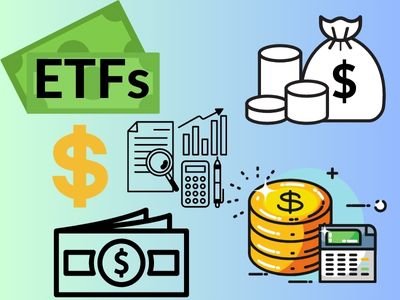Exchange-traded funds, or ETFs, have become increasingly popular among investors in recent years. ETFs offer many benefits, including low costs, diversification, tax efficiency, and ease of trading. In this article, we will demystify ETFs and explore their basic features, structure, types, and how they work.

Structure of ETFs:
ETFs are similar to mutual funds but they are traded on an exchange, like individual stocks. This means that investors can buy and sell ETF shares throughout the day, just like they would with stocks. ETFs are designed to track a specific index, such as the S&P Dow Jones Indices(S&P 500 ) or the National Association of Securities Dealers Automated Quotations (Nasdaq), or a specific sector, such as technology or healthcare.
ETFs are typically passively managed, meaning they track an underlying index, sector, or asset class, rather than being actively managed. ETFs are structured as open-end funds or unit investment trusts (UITs).
Open-end funds are the most common type of ETF, which issue and redeem shares based on the demand from investors. The value of an ETF share is based on the net asset value (NAV) of the underlying assets in the fund. In contrast, UITs issue a fixed number of shares at the beginning and hold the assets until they expire.
Types of ETFs:
ETFs come in different types, including equity, fixed-income, commodity, bond ETFs, and currency ETFs.
Equity ETFs invest in stocks or other equity securities. They aim to track a specific equity index, such as the S&P 500 or the Nasdaq. Equity ETFs may also focus on a specific sector, such as technology or healthcare.
Fixed-income ETFs invest in bonds or other fixed-income securities. They aim to track a specific bond index, such as the Barclays Aggregate Bond Index. Fixed-income ETFs may also focus on a specific type of bond, such as corporate or municipal bonds.
Commodity ETFs invest in physical commodities or commodity futures contracts. They aim to track the performance of a specific commodity, such as gold or oil.
Currency ETFs invest in foreign currencies or currency futures contracts. They aim to track the performance of a specific currency or currency index, such as the US Dollar Index.
Benefits of Exchange-traded funds:
ETFs offer several benefits to investors, including low costs, diversification, and tax efficiency.
Low Costs: ETFs typically have lower management fees than actively managed mutual funds. This is because ETFs are passively managed and do not require a team of analysts to actively buy and sell securities to meet performance objectives.
Diversification: ETFs provide exposure to a wide range of underlying assets. This reduces the risks associated with holding individual securities and provides diversification benefits to investors.
Tax Efficiency: ETFs are structured to be more tax-efficient than mutual funds. ETFs may generate fewer capital gains distributions, which can help investors reduce their tax liabilities.
Ease of Trading: ETFs trade on exchanges like individual stocks, which means investors can buy and sell them throughout the trading day. This makes ETFs a more flexible and convenient investment option compared to mutual funds, which can only be traded at the end of the trading day.
Examples of ETFs
There are many ETFs available to investors, covering a wide range of asset classes, sectors, and regions. Here are some examples of popular ETFs:
- SPDR S&P 500 ETF (SPY): This is one of the oldest and most popular ETFs, which tracks the performance of the S&P 500 index, a broad-based benchmark of the US stock market.
- iShares Core S&P Total US Stock Market ETF (ITOT): This ETF tracks the performance of the total US stock market, including large, mid, and small-cap stocks.
- Vanguard Total Bond Market ETF (BND): This ETF tracks the performance of the Bloomberg Barclays US Aggregate Bond Index, a broad-based index of US investment-grade bonds.
- Invesco QQQ Trust (QQQ): This ETF tracks the performance of the Nasdaq 100 index, which includes 100 of the largest non-financial companies listed on the Nasdaq stock exchange.
- iShares MSCI EAFE ETF (EFA): This ETF tracks the performance of the MSCI EAFE Index, which includes large and mid-cap stocks from developed markets outside of North America, including Europe, Australasia, and the Far East.
- SPDR Gold Shares (GLD): This ETF provides exposure to physical gold bullion, tracking the price of gold in US dollars.
- iShares Emerging Markets ETF (EEM): This ETF tracks the performance of the MSCI Emerging Markets Index, which includes large and mid-cap stocks from emerging markets, including China, India, Brazil, and Russia.
These are just a few examples of the many ETFs available to investors. It’s important to research and understand the underlying assets, fees, and risks associated with any ETF before investing.
Conclusion
ETFs are a versatile and cost-effective investment vehicle that can help investors achieve their financial goals. Understanding the structure, types, and benefits of ETFs can help investors make informed decisions about their investment portfolios.
Whether you’re a new or seasoned investor, ETFs can provide diversification, low costs, tax efficiency, and ease of trading that may make them a valuable addition to your investment portfolio.





[…] been gaining popularity among investors in recent years. These investment vehicles are similar to mutual funds but are traded on stock exchanges like individual stocks. In this article, we will explore why ETFs […]
[…] funds (ETFs) are a popular investment vehicle due to their low costs and diversification. However, before […]